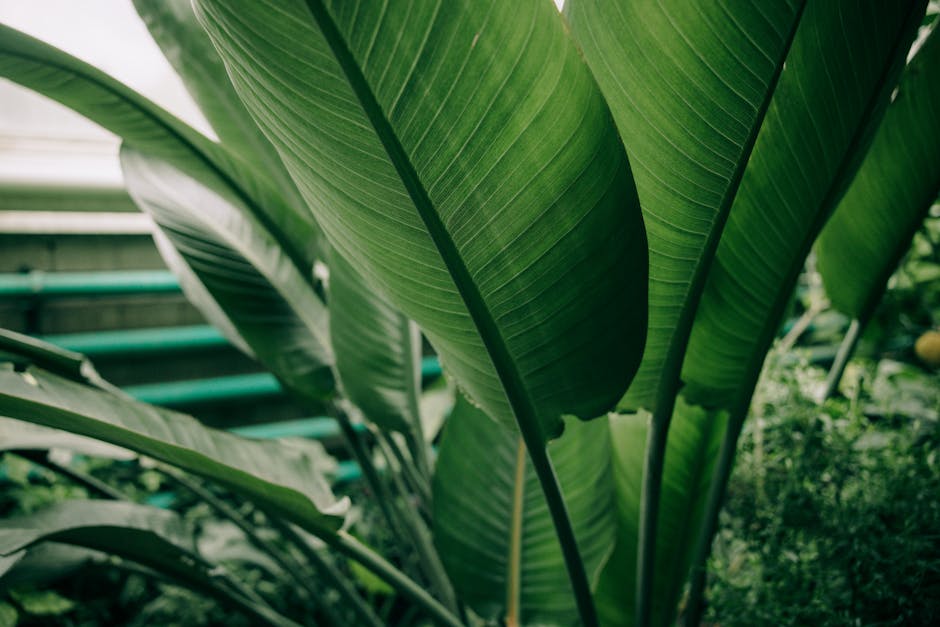Creating a Jungle-Inspired Garden
Transforming your garden into a lush, jungle-inspired sanctuary can be both exciting and rewarding. With its dense foliage, exotic plants, and sense of wildness, this style brings a slice of tropical paradise right to your backyard. Whether you have a small urban plot or a larger space to work with, creating a jungle garden is about embracing diversity in plant life, layers of greenery, and the untamed beauty that nature offers. By understanding how different elements like plant selection, layout, and natural features come together, you can craft a garden that not only looks stunning but also thrives naturally.
Choosing the Right Plants for a Jungle Garden
The heart of any jungle-inspired garden lies in its plants. To achieve the look and feel of a jungle, focus on selecting species that mimic the dense, multi-layered structure of tropical rainforests. This includes a variety of large-leafed plants, climbers, and ground covers that create visual interest from top to bottom.
Tropical plants such as ferns, palms, and banana trees are excellent choices for their striking leaves and rapid growth. Ferns like the Australian tree fern thrive in shady areas and add height to your garden. Palms bring an iconic tropical feel while banana trees can provide both aesthetic appeal and edible fruit in warmer climates. Climbers like the Monstera deliciosa or Philodendron are ideal for covering fences or walls with their sprawling vines.
If you’re working in a temperate climate where tropical plants may struggle during colder months, consider using cold-hardy alternatives like Tetrapanax papyrifer (rice-paper plant) or hardy varieties of bamboo. These plants provide similar textures and heights without requiring constant attention during winter.
Creating Layers and Structure
A key characteristic of jungle landscapes is their layered structure, plants grow at different heights, creating a rich tapestry of greenery. When designing your garden layout, it's essential to think about how you’ll build these layers vertically.
Start with tall canopy trees or large shrubs as your background layer. These should include species like Bamboo, which grows rapidly and adds privacy with its dense foliage. For gardens with more space, consider planting larger trees such as Musa basjoo (hardy banana) or Trachycarpus fortunei (windmill palm), which thrive in temperate climates.
The middle layer should consist of medium-sized plants that fill out the landscape. This includes species such as Canna lilies, Taro plants, or Fatsia japonica. These plants often feature bold leaf shapes or vibrant colors that enhance visual depth.
The final layer is groundcover, which adds softness to the base of the garden while helping retain moisture and suppress weeds. Low-growing ferns, mosses, or hardy perennials like Hostas are perfect choices here.
Incorporating Water Features and Natural Elements
No jungle garden would be complete without the sound of running water or other natural elements that add to its wild appeal. Water features (such as ponds, waterfalls, or even small streams) are excellent ways to bring tranquility to your space while providing vital hydration for plants and attracting wildlife.

A simple way to incorporate water is through a small pond surrounded by lush foliage. Adding aquatic plants like water lilies or marginal grasses can further enhance this feature. If space allows, consider building a cascading waterfall to evoke the feeling of being near a tropical stream. The movement and sound will add an extra layer of sensory experience to your garden.
You can also introduce other natural elements such as large rocks or driftwood to enhance the organic feel of your space. These features help break up the uniformity of greenery while mimicking the naturally occurring formations found in jungle environments.
| Element | Example Plants/Features | Function in Garden |
|---|---|---|
| Tall Canopy Layer | Bamboo, Hardy Banana Tree (Musa basjoo) | Create shade, privacy, height variation |
| Mid-Height Layer | Canna Lilies, Taro Plants | Add color and texture at eye level |
| Groundcover Layer | Mosses, Ferns | Sustain moisture levels & soften the landscape |
| Water Feature | Pond with Water Lilies | Add tranquility & attract wildlife |
| Natural Elements | Rocks & Driftwood | Mimic wild formations & break up greenery |
Caring for Your Jungle-Inspired Garden
The maintenance needs for a jungle-style garden will differ depending on your climate zone and plant choices. In warmer climates where tropical plants thrive naturally, regular watering and ensuring humidity levels are sufficient will be critical factors in keeping your garden looking lush year-round.
If you're working in an area with cooler winters, you'll need to take special care of tender plants during colder months. Covering them with frost cloths or moving them indoors when temperatures drop can help preserve more sensitive species like banana trees or palms. Alternatively, selecting hardier species suited for varying conditions will make long-term upkeep easier.
- Irrigation: A drip irrigation system can be highly effective for maintaining moisture levels without over-watering certain areas.
- Pest Control: A jungle garden’s dense foliage can attract various insects. Encouraging beneficial insects like ladybugs through companion planting helps keep pests in check naturally.
Nutrient-rich soil is another cornerstone of successful jungle gardening. Tropical plants tend to be heavy feeders due to their rapid growth rates; adding compost regularly will boost soil fertility and promote robust growth throughout all layers.
A well-designed jungle-inspired garden is not just visually striking but also serves as an immersive experience for anyone who steps inside it. By carefully selecting plant species that suit your climate, incorporating natural features like water elements and rocks, and providing consistent care tailored to your specific environment's needs, your backyard can become an exotic haven teeming with life.
The beauty of this type of garden lies not only in its visual appeal but also in its ability to foster biodiversity and create a calming space where nature thrives freely. Whether you're inspired by distant rainforests or want a peaceful retreat close to home, there’s always room for creativity when crafting your own little slice of jungle paradise.